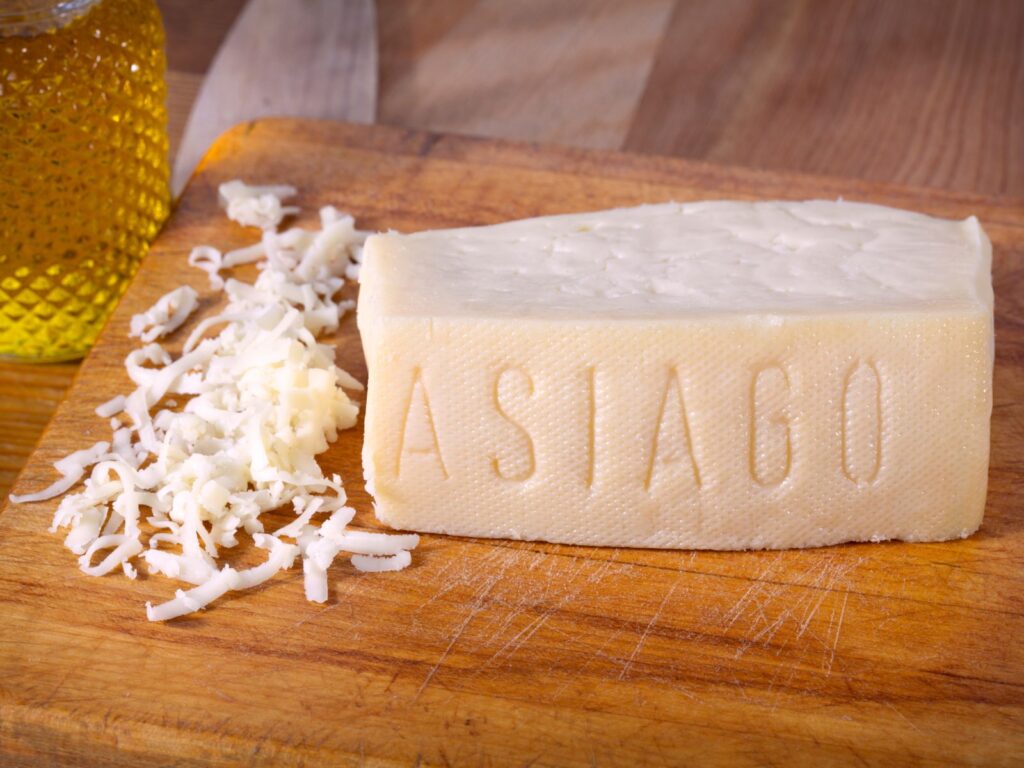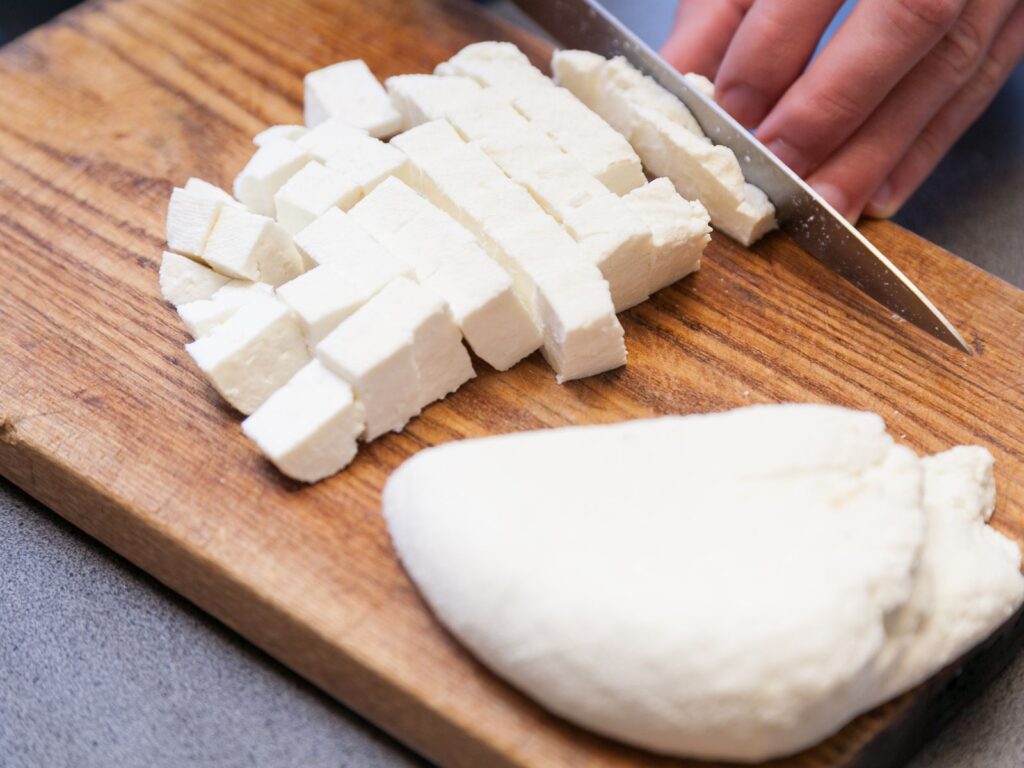Asiago is a semi-hard pressed Italian cheese that is popular all over the world. Known for its nutty flavour and slightly grainy texture, Asiago cheese is used in a wide range of dishes, from pasta to sandwiches to salads. In this blog post, we will explore the origins, production methods and pairings for Asiago cheese.

What is Asiago?
Asiago cheese is named after the Asiago plateau in the Veneto region of northern Italy, where it has been made since the 10th century. The cheese was originally made by farmers as a way to preserve surplus milk for the winter months.
Asiago cheese has a long and storied history. Indeed, its earliest mentions in writing date to the 10th century, and by the 15th century, it had become a popular cheese in Italian markets. In 1978, Asiago was granted protected status under European Union law, meaning that only cheese made according to specific criteria and in certain regions of Italy could be called Asiago.
How Asiago is made
The lush pastures in the Veneto and Trentino-Alto Adige regions of northern Italy provide ideal grazing conditions for the cows that produce the milk for Asiago. Presently, a number of different companies in Italy produce this amazing cheese, including Caseificio Pennar, Latteria di Soligo, and Latteria Montello.
Asiago cheese is made from whole cow’s milk that is heated and curdled using rennet. The resulting curds are cut and drained, and then the cheese is moulded and aged for several months. During the ageing process, the cheese is brushed and turned regularly to develop its distinctive flavour and texture.
Flavour profile
Asiago cheese has a semi-hard, slightly grainy texture and a nutty, savoury flavour. Its aroma is mild and slightly sweet, with notes of butter and nuts. The cheese is typically aged for 3-12 months, but it can be aged for longer periods of time for a more intense flavour.
Serving guide
Asiago cheese is a versatile cheese that pairs well with a wide range of foods. It is commonly grated over pasta dishes and pizzas, but it also works well in sandwiches and salads. Asiago cheese is best enjoyed with a crisp white wine, such as a Pinot Grigio or a Sauvignon Blanc.
Alternatives to Asiago
If you’re looking for alternatives to Asiago cheese, there are a few other hard Italian cheeses that you might enjoy:
Parmigiano Reggiano – this cheese is very similar to Asiago, but it has a slightly sharper flavour and a more crumbly texture.
Pecorino Romano – this cheese is made from sheep’s milk and has a sharp, salty flavour. It is commonly used in pasta dishes and salads.
Grana Padano – this cheese is also made from cow’s milk and has a similar texture to Asiago, but it has a nuttier, sweeter flavour.
Conclusion
Asiago cheese is a delicious and versatile Italian cheese that is enjoyed all over the world. Its nutty flavour, slightly grainy texture, and mild aroma make it a favourite of cheese lovers everywhere. Whether grated over pasta or enjoyed on its own, Asiago cheese is a must-try for any cheese connoisseur.
Thank you for reading
Thank you for reading this post about yet another amazing artisanal cheese. Have you tried this cheese before? Drop us a comment below with your thoughts.
If you enjoy learning about new cheeses, you can subscribe to our newsletter below. You will hear from us about once a week as we share new cheese profiles with you.
Finally, keep scrolling to find some more cheeses and recipes that have been recommended for you. Keep it cheesy!



